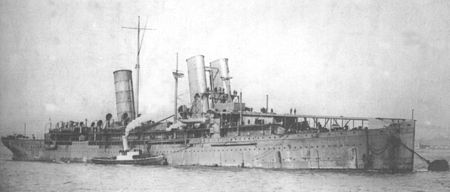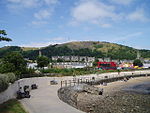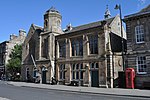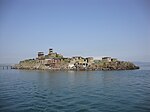HMS Campania (1914)

HMS Campania was a seaplane tender and aircraft carrier, converted from an elderly ocean liner by the Royal Navy early in the First World War. After her conversion was completed in mid-1915 the ship spent her time conducting trials and exercises with the Grand Fleet. These revealed the need for a longer flight deck to allow larger aircraft to take off, and she was modified accordingly. Campania missed the Battle of Jutland in May 1916, but made a number of patrols with elements of the Grand Fleet. She never saw combat and was soon relegated to a training role because of her elderly machinery. In November 1918 Campania was anchored with the capital ships of the Grand Fleet when a sudden storm caused her anchor to drag. With no second anchor being laid, she hit several of the ships and the collisions punctured her hull; she slowly sank, with no loss of life.
Excerpt from the Wikipedia article HMS Campania (1914) (License: CC BY-SA 3.0, Authors, Images).HMS Campania (1914)
Geographical coordinates (GPS) Address Nearby Places Show on map
Geographical coordinates (GPS)
| Latitude | Longitude |
|---|---|
| N 56.040066666667 ° | E -3.22495 ° |
Address
Outer Harbour
KY3 9DW
Scotland, United Kingdom
Open on Google Maps








